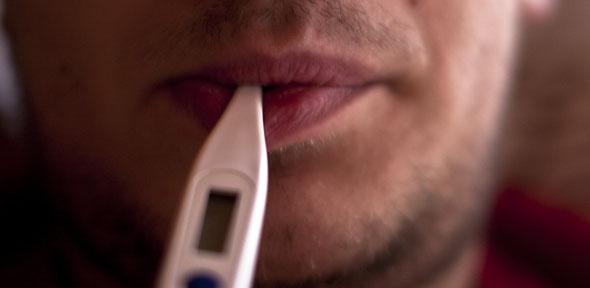
From vitamin C and echinacea to warm clothes and antibacterial soap, there’s no shortage of ideas about how to prevent and manage colds and flu. Unfortunately, many of these are not based on solid scientific evidence. In fact, medical researchers are only starting to unravel the range of factors that affect our susceptibility to getting an infection. Now we have discovered that our body clock plays an important role – making us more prone to get infected at certain times of the day.
It is perhaps easy to forget that we have co-evolved on this planet with micro-organisms, including bacteria, which may be either beneficial or harmful to us. Similarly, viruses cannot copy themselves without help from our cells. Without us, they simply wouldn’t exist.
So what happens when a virus encounters a cell? First, it has to get in through a protective barrier called the cell membrane. Then it has to hijack the interior of the “host” cell to subvert it and divert all resources to copy itself millions of times. Once an army of identical clones is formed, it breaks out of the cell, usually destroying it in the process. Imagine millions of these new viruses then being able to do exactly the same to other cells nearby. The cycle goes on, with often rapid amplification of the virus through a tissue, and then through the body.
That’s if the virus had it all its own way … But there is always a battle in play between invading organisms and our bodies. Our immune system counteracts the invading organisms and will invoke mechanisms to stop the virus entering, replicating and spreading. This defence system works at the level of individual cells in the body, but also in specialised tissues of the body that are designed to mount a response to such invasions.
It now turns out that our body clock is also an important gatekeeper of virus infections. The body clock is an amazing piece of evolutionary biology. It’s thought that most organisms on our planet have a biological clock that keeps track of the 24-hour day. It can do this by orchestrating chemical reactions and genetic switches that rhythmically control thousands of genes in cells in the cell – turning about 15% of all genes on and off across the day and night.
Timely experiment
So why might viruses care about our body clock? Since our cells are miniature factories, making things that the virus must have to copy itself, the virus is less likely to succeed when the production line is shut down. This is what we tested in the laboratory, by infecting cells and mice at different times of the day. We found that viruses are less able to infect in the late afternoon. In contrast, in the early morning, our cells are hives of biosynthetic activity, at least from the virus’s viewpoint. So, if a virus tries to take over a cell in the early day, it is far more likely to succeed, and spread faster, than if it encounters a rather less favourable climate in the evening.
Perhaps even more interestingly, when the clockwork is disrupted, viruses are more prolific at taking over cells and tissues. Such “clock misalignment” can happen when we do shift work, get jet lagged, or experience the phenomenon of “social jet lag”, which is caused by changes in our sleep schedule on our days off. Therefore, it’s important to know about these interactions because it will undoubtedly help us to find ways to ensure better health for ourselves. For example, since we know shift workers are more likely to get infections, it might be a good idea to give them flu vaccinations.

Knowing about the clock and viruses could also help us to design better public health measures to combat virus spread. You could imagine that during a pandemic limiting exposure during the early daytime could be a small but important intervention to try to prevent viral infection from taking hold. Indeed, a recent study by a team at the University of Birmingham showed that vaccinating people against flu in the morning is more effective than in the evening. This principle could be the same for many unrelated viruses.
The research could also help us crack a longstanding enigma – why do virus infections like flu happen more commonly in the winter months? It turns out that the very same molecular switch – called Bmal1 – that goes up and down in the day and night also changes according to the seasons, going up in the summer and down in the winter. When we artificially lower Bmal1 levels in mice and cells, the virus is able to infect more. As occurs on a daily basis, the waxing and waning of Bmal1 in our bodies could be a reason why we’re less likely to cope with viruses like flu in the winter.
So, if you’re desperate to avoid catching a flu virus that’s been going around the office, rather than trying to boost your immune system with various vitamins, you may want to try to simply work from home in the mornings.
Akhilesh Reddy, Wellcome Trust Senior Fellow in Clinical Sciences at the Department of Clinical Neurosciences, University of Cambridge
This article was originally published on The Conversation. Read the original article.
The opinions expressed in this article are those of the individual author(s) and do not represent the views of the University of Cambridge.

Akhilesh Reddy (Department of Clinical Neurosciences) discusses how circadian rhythms can affect whether you get the flu.

The text in this work is licensed under a Creative Commons Attribution 4.0 International License. For image use please see separate credits above.